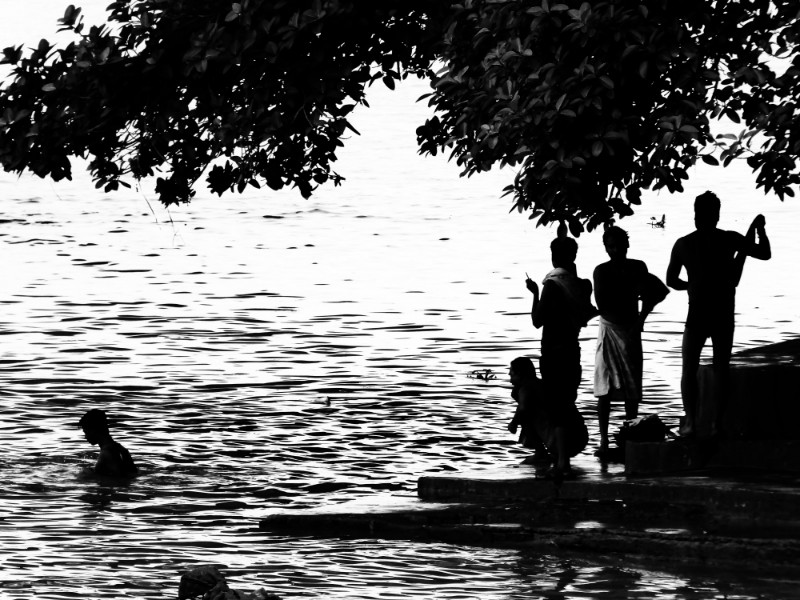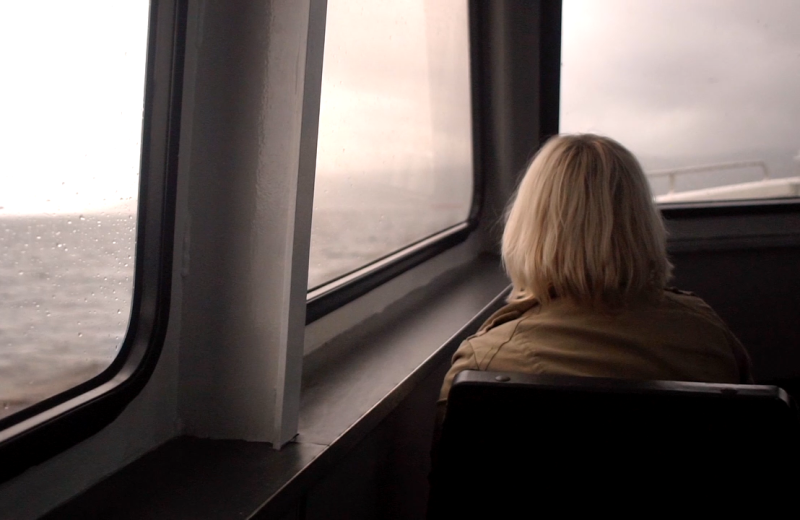Between the Years
/Photo: Katrin Schönig
By Paul Scraton:
We were supposed to leave on Boxing Day, but the waves raced in off the North Atlantic, crashing against the harbour walls and rolling over the loading bay where the fishing boats had been pulled on wheels out of the ocean’s reach. There was no ferry that day, as there hadn’t been since the 17th December, and the forecast was not good.
For two further days the wind and the waves hammered at the island. São Jorge is a thin sliver, a line of volcanic peaks falling away towards the ocean. If there is flat land to be found it is often on lava debris fields at the foot of cliffs, where villages were built that, for centuries – and in some cases still – are only accessible by foot. Across the channel it is possible to spy the neighbouring islands of Pico and, from the right vantage point, Faial. But if the winds and the waves are high, it does not matter how close they might be. No boats will leave the harbour, and no planes will rise from the airstrip.
We hunkered down, waiting for the break. At a local surf shop, the owner looked at the same website as the owner of our guesthouse had shown us on his phone. A line of coloured boxes, filled with numbers. The website is hosted in the Czech Republic but is apparently bookmarked on every browser in São Jorge. The surf shop owner translated what it meant. High winds. Big waves. We weren’t going anywhere.
Each evening came and with it the message that the ferry was cancelled for the following morning, until one evening when it didn’t. Our guesthouse owner was hopeful. Tomorrow, you can sail. But he promised to leave our beds made just in case. We were to message him only once we left harbour. Only then, would he know we had finally checked out.
At the port in the morning a trickle of passengers became a tide. It was more than ten days by now since the ferry to Pico and Faial had run. In that time, Christmas had come and gone, although the decorations were still up in town and festive songs were still playing through the loudspeakers that had been erected some time in December. Passengers checked in their bags and waited in the terminal buildings.
Others lined up their cars, waiting to board. At the check in counter, a woman delivered a parcel that would travel on the ferry without her. A man did the same. A taxi driver delivered three boxes and then queued to pay for the transportation, before driving off to work the next fare. The weather forecast for the next day was bad, and for the day after too. This might be the only chance.
Photo: Katrin Schönig
We sat on deck and watched Velas and São Jorge slowly retreat. It would take two and a half hours to reach Faial via Pico, and the island remained in view throughout. It was a long farewell. The first crossing was rocky, the second was rough. Perhaps they wouldn’t have made the crossing if it hadn’t been more than a week since the last one. We stayed on deck and watched the horizon. Some passengers slept, laid out across the plastic chairs. Others headed inside and tried to ignore the motion, watching films on their phones or tablets.
In the channel between São Jorge and Pico, in the central islands of the Azores in the middle of the Atlantic, the internet connection was better than Berlin. We weren’t surprised.
We were between the years and between the islands. In the channel between Pico and Faial a windsurfer raised alongside the ferry, flying above the waves that we were crashing through. The waves seemed to grow bigger the closer we got to Horta and our destination. The spray reached the top deck. Gulls hovered above. At least one passenger was sick. The time between the years is usually when nothing much happens. As we approached land and the rise and fall of the ferry seemed to intensify, we wondered if there were any more surprises left.
At Horta harbour, where sailors from around the world have left their mark in colourful murals on the harbour wall, and where the first transatlantic seaplanes used to land between the boats, we felt solid land beneath our feet. That evening in Faial, we would still be able to hear the ocean breaking against the rocks below where we were to sleep. We could still feel the motion where we lay. And we could see the dance of the white horses as they broke between the islands behind our closed eyes.
Outside it was calm. The sky had cleared and the stars shone down on the islands and the ocean. Tomorrow, the sun would shine. But the waves had been growing, and the colours and the numbers on the Czech website were not good. The messages had been received. The ferry for the next morning had already been cancelled.
Photo: Katrin Schönig
***
Paul Scraton is the editor in chief of Elsewhere: A Journal of Place. His latest book is In the Pines, a novella of the forest with photography by Eymelt Sehmer, and published by Influx Press.















